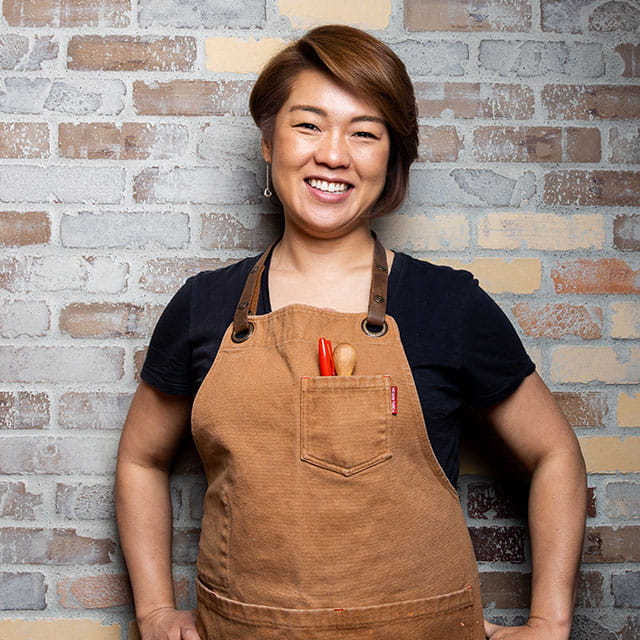
Chef Jinhee Lee
We stopped by Jin Bar to hear more of her incredible journey towards becoming Calgary’s Korean comfort go-to. View Culinary Connections for more.
Read BioFeatured in Eater, Thrillist plus semi-finalists of the 2018 James Beard Award for Best Chef, Chef-Owners Ross Coleman and James Haywood are kitchen creators of global soul; the expression of one’s inner identity, what translates a people or a culture on a plate.
In a city, full of global flavours spread across the map, and worldwide stamps across their own passports. Chef Coleman and Chef Haywood have established Kitchen 713, bringing global flavours and trusted, authentic Southern cuisine together in one prime location.
We were excited to sit down and learn more about this long-dreamt, jet-setting inspired concept along with how flavours, spices and overseas dining experiences go from travel-found ideas to Houston-loved dishes without diner fear of the new, the different or the unknown.
What inspired you to open this concept? Please provide some details about your operation.
We met in the industry over ten years ago and always used to get together to cook in each other's homes with visions of opening our own place. In 2014, we were ready to move on from our jobs and said, "let's make this happen."
We then went on the hunt for a restaurant space and were able to open with about $8,000 total. As far as the concept went, we had always wanted to create global flavours so every single dish on our menu is one we’ve always loved and been inspired by prior to opening the restaurant. Ultimately, this is our main focus; cooking foods we not only like to eat but also like to cook in our homes.
What inspires your featured flavours, and how do you achieve them?
Being able to travel as a means to perfect our craft. We spent a few weeks in Thailand and really got to know the Southeastern flavours and fell in love with them along with the day and night markets. As a result, we’ve added a lot of Southeast Asian influences on our menu.
Essentially, we don't like to stray too far from authentic flavours so we want to take on global flavours but use Southern ingredients that they probably wouldn't use there instead. For example, we once spent a little time in China and they have a black vinegar-braised beef fish that sparked our interest. So, we took those flavours and made a black vinegar-braised oxtail; this is how we tend to bring out our Southern influences in our dishes.
Describe the role flavour ingredients like spices, herbs and seasonings play in the cuisine you create to achieve that craveable flavour?
Spices are everything, especially at our restaurant. All of our dishes are heavily spiced with inspirations from India to West and East Africa.
In the restaurant, we have a wall of over 120 spices. Some items get marinated, other get braised. We also add spices to our dishes that you wouldn’t normally see or have experienced before. For example, in our fried chicken, we have Negro Pepper, it’s a West African pepper.
In terms of the spices we use on a daily basis, the main one would be coriander. We also use a lot of Szechuan peppercorns and Aleepo pepper. These have to be in our kitchen at all times.
How do you create the perfect balance of old-school, all-American food with Houston’s global cultural flavour influences and how do you bring this to life?
For us, it comes pretty naturally. We have a menu comprised of dishes that we like to eat with aggressive flavours. Our goal is to showcase flavours that customers aren’t going to go off the beaten-path to find, we bring them directly to their table.
Most of the flavours we do, you’ll find in restaurants throughout Houston but a lot of the time, they might be in sketchier parts of town or people feel uncomfortable in certain areas. As a result, we wanted to have a place where everybody can be comfortable and still taste these authentic flavours they crave.
Which new flavours and ingredients can we expect to see making their way to the centre-of-the-plate in the near future?
We are both African American so we’ve been studying and producing a lot of great West African food from countries like Senegal and Nigeria. We've been playing around with jollof a lot lately. It's just as flavourful as any rice dish you can find, like a piyaya or Louisiana jambalaya. When cooking these flavours, you can see where all these different concepts here in America come from, especially with the jollof and the resemblance of jambalaya.